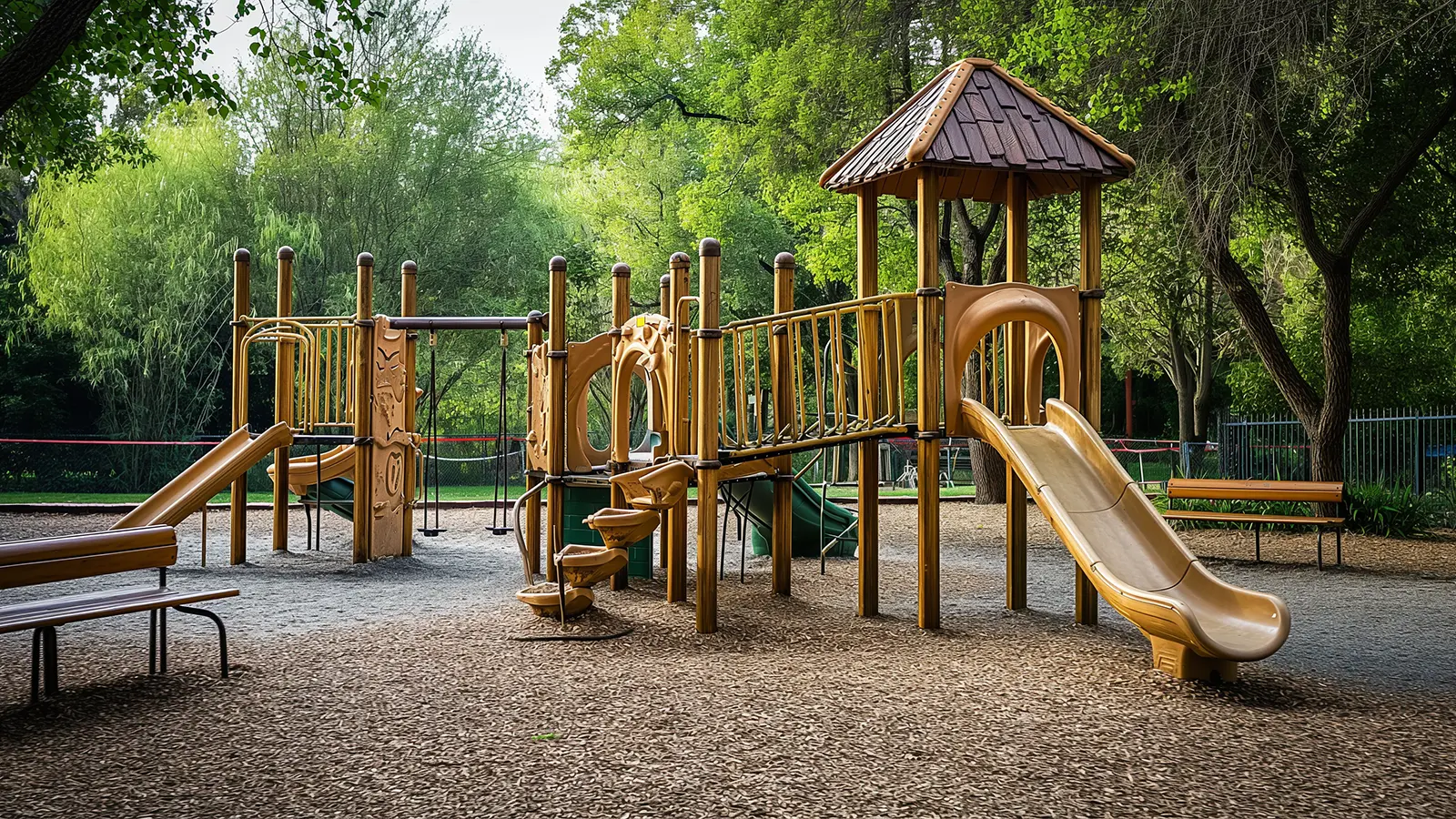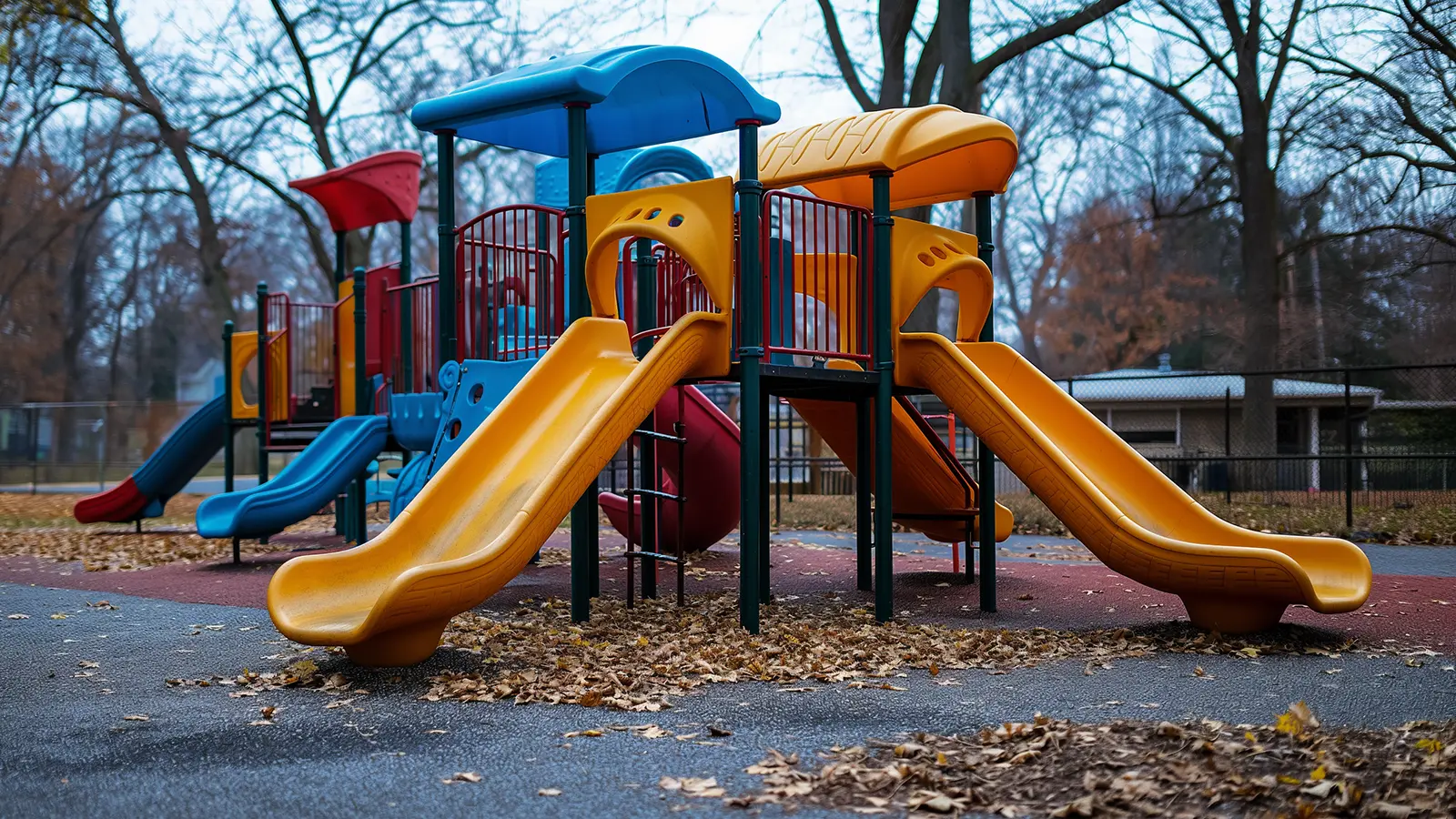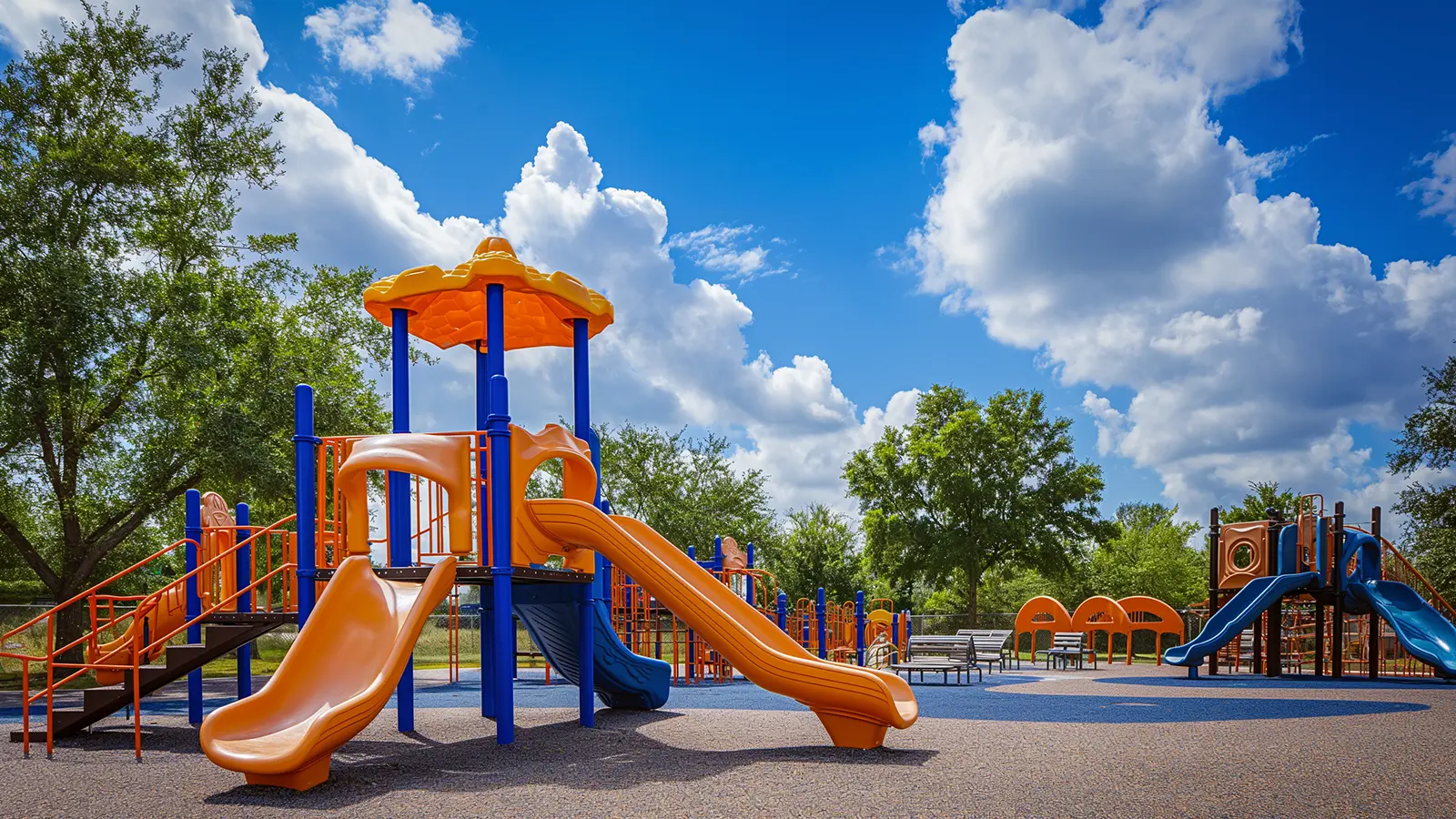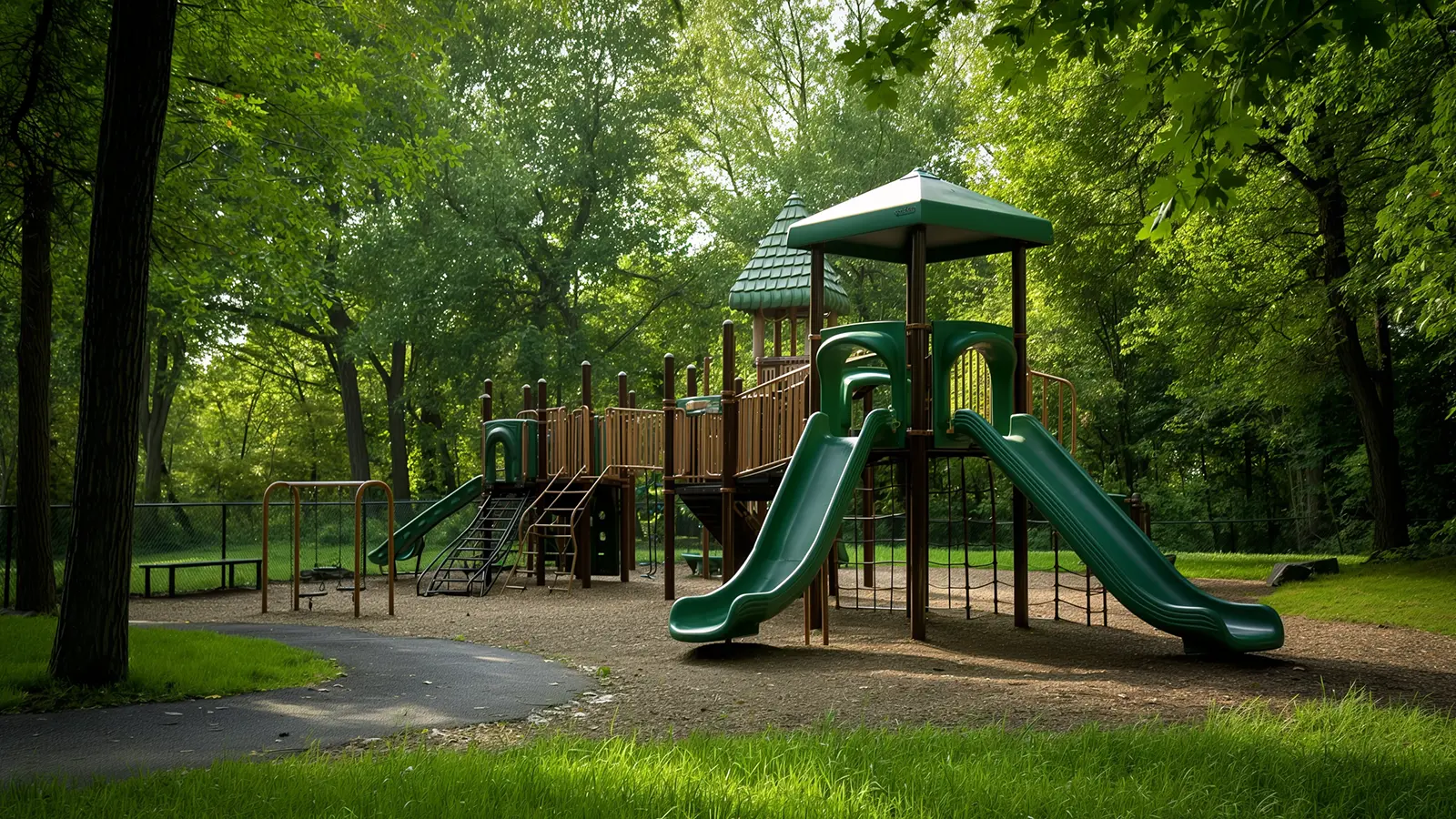2024-03-28
Essential Playground Equipment
Selecting the right playground equipment is vital for creating a safe, engaging, and developmental space for children of all ages.
The choice of playground equipment can significantly influence how children interact with their environment, promoting physical activity and essential skills like problem-solving and coordination. In settings such as school playgrounds or commercial properties, the equipment must be durable and adaptable to the needs of a diverse group of users. Choosing pieces catering to various developmental stages is crucial, ensuring that all children find the playground enjoyable and challenging. Additionally, the best playground equipment incorporates elements that foster both individual play and social interaction, enhancing the overall play experience.
Key points to remember when selecting playground equipment include:
- Safety First: Ensure all equipment meets or exceeds safety standards.
- Developmentally Appropriate: Choose items suitable for different age groups and developmental levels.
- Diverse Activities: Include various equipment that promotes different types of play and learning.
- Durability: Opt for high-quality, robust materials for heavy use in commercial playgrounds.
- Engagement: Select visually appealing and mentally stimulating equipment to keep children interested.
A mix of playground items like slides, swings, climbers, and interactive panels can make a playground fun and a valuable developmental tool. This approach helps cater to children’s physical, cognitive, and social needs, making the playground a comprehensive environment for growth. It’s also essential to regularly update and maintain the equipment to preserve its safety and appeal over time.
Ultimately, the goal is to create a playground that children will find irresistible and parents will appreciate for its educational and developmental benefits. By thoughtfully choosing the right playground equipment, planners can ensure that a playground serves as a dynamic space where children thrive and learn through play.


Common and Popular Playground Equipment
Swings, slides, and monkey bars dominate the landscape of modern playgrounds, emblematic of commercial playground equipment and school playground settings. These foundational pieces are cherished for their universal appeal and the fundamental physical activities they provide, ensuring their status as perennial favorites.
Swings are particularly notable for their versatility, accommodating a wide range of age groups – from the gentle swaying suitable for toddlers to the more vigorous swinging for older kids. Slides offer a blend of fun and challenge, with designs ranging from simple, straight runs to more complex spiral and tunnel slides that capture the imaginations of adventurous young minds. Monkey bars, on the other hand, challenge children to swing from bar to bar, building upper body strength and coordination. This equipment supports physical development and is a crucial play structure in commercial and school playgrounds, encouraging kids to overcome challenges through playful efforts.
Key pieces of playground equipment include:
- Swings: They are available in various sizes to cater to different age groups, including bucket swings for toddlers and belt swings for older children.
- Slides: These feature bright colors and come in multiple forms, such as waves, spirals, and straight, suitable for playgrounds in parks and schools.
- Monkey Bars: Known for helping kids improve their grip strength and coordination.
- Spring Riders: Small, ride-on equipment that moves back and forth, providing fun and improving balance.
- Merry-Go-Rounds: Rotating platforms that offer fun and the challenge of maintaining balance while in motion.
- Balance Beams: Narrow beams that children walk across to enhance balance and coordination.
These popular pieces enrich the playground experience and meet critical playground safety standards, ensuring the play environment is safe for all children. Their vibrant colors and engaging designs make these structures attractive focal points in any play area. Moreover, the diversity in equipment types ensures that children of various abilities and ages can find enjoyable and suitable activities, contributing to inclusive outdoor play space in both commercial and school settings.


Selecting the Right Playground Equipment
Selecting the ideal playground equipment requires careful consideration of safety, age appropriateness, and the overall design of the play area. Safety is the foremost priority; ensuring that all commercial and school playground equipment adheres to stringent safety standards is crucial. This includes selecting play equipment that is constructed with durable materials and designing the playground with proper surfacing materials like rubber mulch or poured-in-place rubber to prevent injuries from falls.
Age appropriateness is another critical factor in choosing the right playground equipment. It’s essential to select items that not only cater to the physical size and abilities of the children who will use them but also provide the right level of challenge to promote their development without overwhelming them. Equipment should be low to the ground for younger kids and feature soft edges. At the same time, older children might benefit from more complex structures like net climbers and parallel bars that challenge their growing motor skills and strength in a school playground or commercial playground.
The overall design of the play space should create an inclusive environment that accommodates various activities and abilities. This includes having a diverse array of playground equipment, such as swings for all ages, gentle spring riders for toddlers, adventurous monkey bars for older kids, and accessible merry-go-rounds that allow children of different abilities to play together. Integrating play systems and play structures that offer a variety of activities can help ensure that every child can find something engaging and enjoyable.
Finally, the play space’s design involves the physical layout and the integration of various types of play equipment that encourage different forms of play – physical, imaginative, and social. This could mean including quieter areas with sensory panels and tic-tac-toe games alongside more active zones with swing sets and slides. The arrangement should facilitate easy supervision while allowing kids to explore freely and safely, fostering a balanced and stimulating environment for everyone in school and commercial playgrounds.


Essential Elements for an Effective Playground
An effective playground transcends mere entertainment; it catalyzes diverse forms of play and developmental learning. Essential equipment and features are meticulously chosen to foster physical, cognitive, and sensory growth among children of all ages in school and commercial playgrounds.
Dynamic playground equipment such as spinning items and jungle gyms are fundamental for enhancing physical development and building upper body strength. These elements, integral parts of commercial and school playground equipment, are designed to be fun and physically challenging, encouraging children to push their limits in a safe environment. Innovative play systems, including play tic-tac-toe boards and sensory panels, stimulate cognitive abilities and sensory skills, offering children interactive experiences that support brain development. Furthermore, incorporating playground climbers and balance beams, standard in both school and commercial playground equipment, helps develop coordination and motor skills, making them invaluable additions to any play area.
Key elements for an effective playground include:
- Spinning Playground Equipment: Merry-go-rounds and spinners that help with balance and spatial orientation.
- Jungle Gyms: Robust structures promoting climbing, swinging, and physical engagement.
- Playground Slides: Various configurations cater to thrill levels, from simple to complex.
- Monkey Bars: Challenging children to swing from bar to bar, enhancing grip strength and coordination.
- Play Tic-Tac-Toe Boards: Interactive games that encourage strategic thinking and social interaction.
- Sensory Panels: Features that engage different senses, supporting sensory development.
- Balance Beams: Narrow beams that require careful walking, improving balance and concentration.
- Parallel Bars: Apparatus for swinging and balancing, aiding in developing upper body strength.
Site amenities like bike racks and benches are also vital. They ensure parents and guardians have a comfortable spot to watch over their children and promote a relaxing and inclusive atmosphere. These features not only enhance the safety and functionality of the playground but also ensure that it serves as a community hub where families feel welcome and engaged. By thoughtfully integrating these elements, playground designers can create enriched environments that support holistic child development in any commercial playground.


Equipment Considerations and Recommendations
When selecting playground equipment, it’s crucial to prioritize safety and suitability to ensure a secure and enjoyable environment for children. Not all playground equipment is ideal for every setting, particularly in public playgrounds; certain types pose more risks than benefits. Equipment with overly hard surfaces can lead to more severe injuries from falls, while structures with unsafe heights can be dangerous for younger children. Moreover, playgrounds with complex systems might be challenging and unsuitable for younger kids, potentially leading to accidents or discouragement.
Key equipment considerations for public playgrounds include:
- Avoid Overly Hard Surfaces: Opt for impact-absorbing materials like rubber mats or engineered wood fiber.
- Appropriate Heights for Equipment: Ensure that equipment heights are suitable for the age group that the playground serves.
- Simplicity Over Complexity: Choose simple yet engaging equipment that is easy for children to use and understand.
- Regular Inspections and Maintenance: Implement a routine to check and repair playground equipment to ensure ongoing safety.
- Age-Appropriate Design: Tailor playground climbers and other structures to the capabilities of the intended age group.
- Inclusion of Safety Signage: Clear signs should be placed to guide children and guardians on using the equipment safely.
Playground managers must conduct regular maintenance checks and updates to keep the playground in optimal condition and safe for daily use. This involves repairing any wear and tear and updating older equipment to meet new safety standards and accommodate advancements in playground design. Ensuring that all playground equipment meets the required safety specifications and suits the developmental needs of children can significantly enhance the safety and functionality of the play area.
Following these recommendations, playground administrators can create a safer, more engaging, and developmentally appropriate play environment. Choosing the right playground equipment and maintaining it properly helps provide a fun and secure space that children can enjoy without risk.


Building the Perfect Playground
Creating the perfect playground is an intricate process involving more than selecting enjoyable pieces of playground equipment. It requires a thoughtful approach to designing a cohesive play environment that encourages children to explore, learn, and grow. Planners and builders must consider how each piece of equipment fits into the overall space and contributes to children’s developmental milestones. The goal is to design a playground that balances fun and functionality, providing a stimulating and safe environment for children of all ages.
When selecting playground equipment, it’s essential to focus on age-appropriate and safe items, ensuring they meet the highest safety standards. School and commercial playground equipment must be chosen carefully to suit the specific needs and abilities of the intended age group. This includes considering the equipment’s physical and cognitive challenges and ensuring it is accessible and enjoyable for all children. Planners can create an environment that promotes healthy physical and mental development by carefully choosing playground equipment.
Key components such as playground climbers, slides, and swings should be integrated with innovative elements like sensory panels and interactive play systems. This diverse range of outdoor play equipment helps cater to various interests and developmental needs, making the playground a universally appealing space for children. Commercial playgrounds, in particular, benefit from including a variety of equipment that can withstand heavy use while offering safe and engaging activities for children.
Ultimately, a playground design’s success lies in offering a dynamic and inclusive play area where every visit is a new adventure. By emphasizing safety, inclusivity, and educational value in playground equipment, builders and planners can significantly enhance children’s recreational and developmental experiences. Whether it’s a school setting or a commercial site, the right mix of playground equipment can make all the difference in creating memorable and valuable play experiences for children.
In summary, building the perfect playground is an endeavor that goes beyond mere play. It’s about crafting spaces that foster learning, growth, and safety, all while ensuring children have the utmost fun. With thoughtful selection and strategic placement of playground equipment, any play area can be transformed into a vibrant activity hub that supports every child’s holistic development.
















